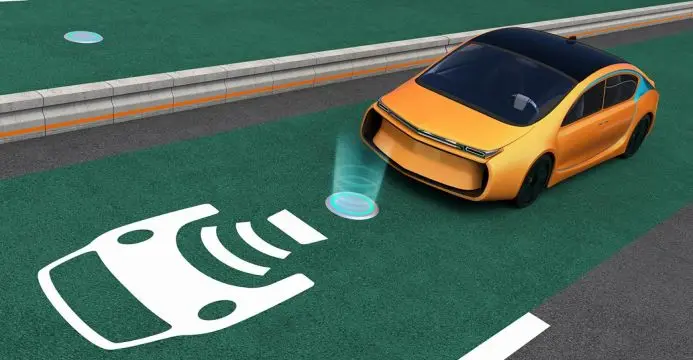India’s First Wireless EV : India is stepping boldly into the future of clean and efficient transportation. The Ministry of Road Transport and Highways has revealed plans to begin testing the country’s first wireless electric vehicle (EV) charging highway by 2026 — a landmark move that could significantly alter how India moves, charges, and innovates.
⚡ What Is Wireless EV Charging?
Wireless EV charging, also known as inductive charging, allows electric vehicles to charge while driving over specially embedded coils beneath the road surface. Unlike traditional plug-in stations, this tech eliminates stops and cables, offering continuous, real-time energy transfer to the vehicle — all while on the move.
🛣️ Where Will the Pilot Project Launch?
Although the specific test stretch hasn’t been disclosed, officials suggest it could be part of a major Delhi-Mumbai corridor, given its economic importance and high traffic volume.
The National Highways Authority of India (NHAI) is working in collaboration with international engineering firms to design and test embedded charging pads, expected to power vehicles at speeds of up to 80 km/h.
🚗 Why This Matters: Game-Changing Benefits
- No More Range Anxiety: Vehicles can charge while they move, making long drives stress-free.
- Boost to EV Adoption: Reduces infrastructure dependence on charging stations.
- Eco-Friendly Transit: Cuts emissions by enabling cleaner, uninterrupted travel.
- Cost Savings: Saves time, battery wear, and energy losses caused by conventional charging.
📊 India’s EV Landscape in 2025
India currently has over 3.2 million registered EVs, with a government target of 30% EV penetration by 2030. However, limited charging stations remain a hurdle. Wireless charging highways could solve this.
Some recent initiatives:
- Delhi introduced over 2,500 public EV chargers in Q2 2025.
- States like Maharashtra and Karnataka are incentivizing wireless charging pilot programs.
🔬 How It Works: The Science Behind Wireless Roads
- Road Coils: Special magnetic coils are embedded under the road surface.
- Vehicle Receiver: EVs are fitted with compatible receiver pads beneath.
- Electromagnetic Transfer: As vehicles pass over, energy is transferred via magnetic fields.
Advanced sensors detect vehicle types, charging needs, and dynamically adjust voltage — ensuring safe and efficient energy delivery.
🔮 What’s Next?
This isn’t just a pilot — it’s the foundation of future infrastructure. If tests succeed, India could see 200+ km of wireless charging lanes by 2028.
🚧 Challenges Ahead
- High installation cost
- Standardization across vehicle types
- Weather resilience and durability of embedded coils
- Coordination with state governments and private automakers
Despite these, the vision is clear: Zero-emission, non-stop mobility.
🗣️ Expert Speak
“India’s wireless EV highway project is not just about infrastructure — it’s about national mobility transformation,” says Ankit Mehta, a senior automotive analyst at EVNext. “If successful, it will make India a global innovation hub.”
“Exciting News! Sejal News Network is now on WhatsApp Channels
Subscribe today by clicking the link and stay updated with the latest news!” Click Here
Our App : Click Here


